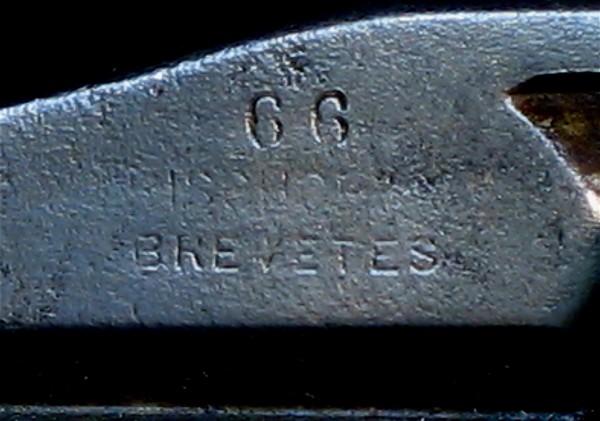Some of the most beautiful work of this craftsman, and many others, are in this book “Liège Gunmakers through their Work. 1800 - 1950”.
For more detail see: LIEGE GUNMAKERS
Bischop Pierre & Cie
This
weapon is signed Bischop Pierre & Cie, what is curious is that the buttplate is
from Neumann Frères !!

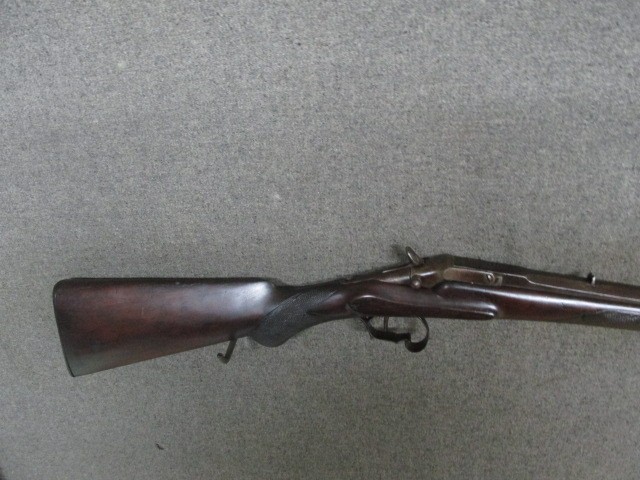
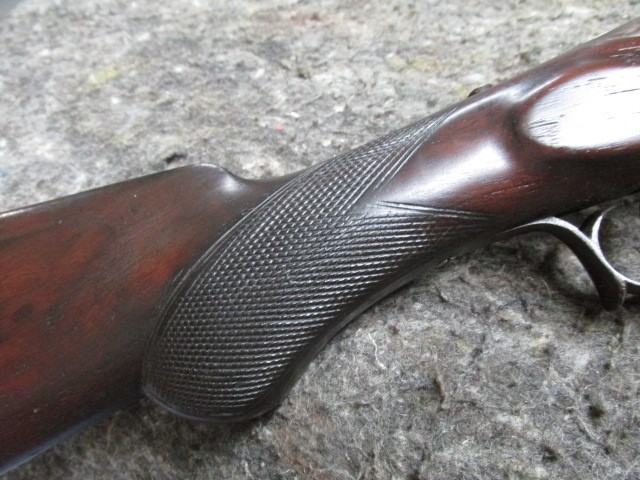


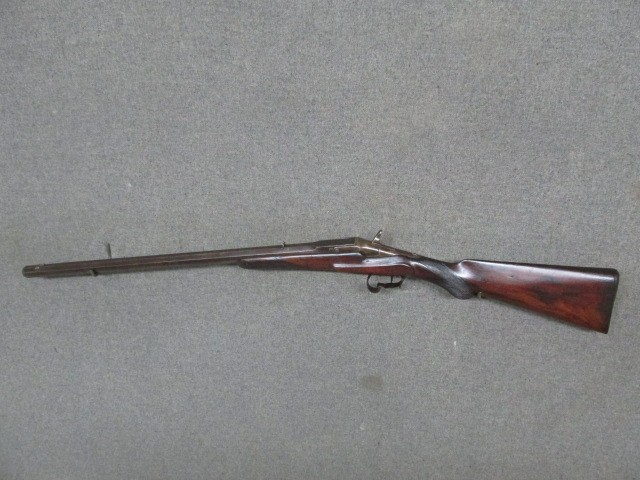


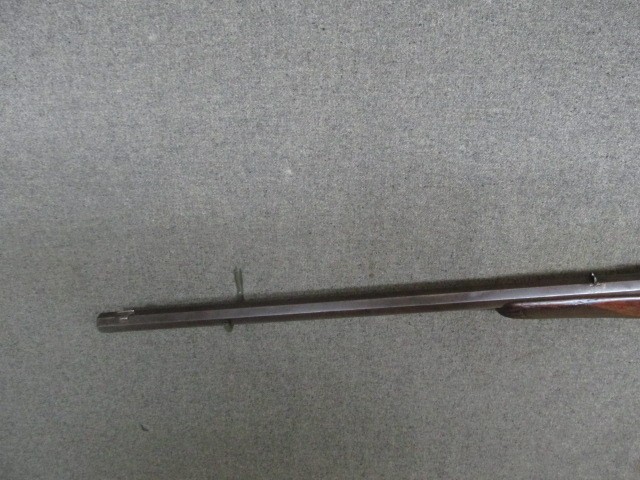

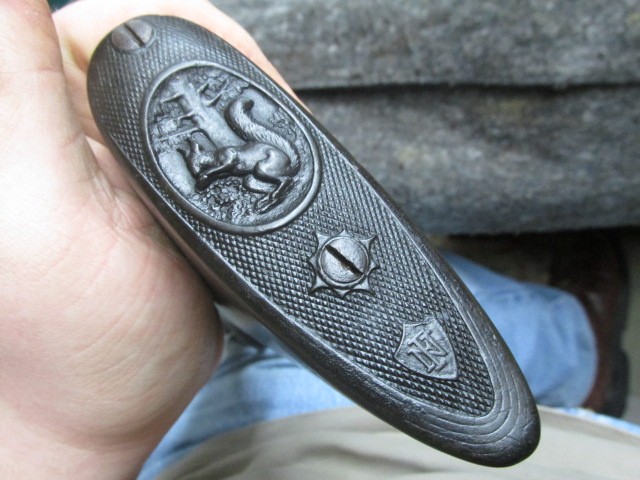
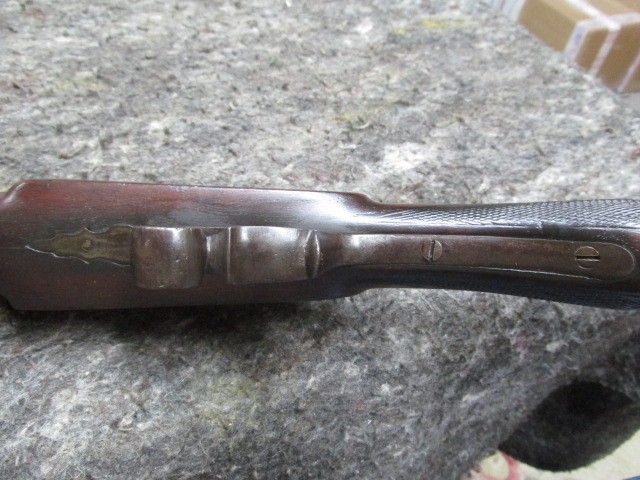
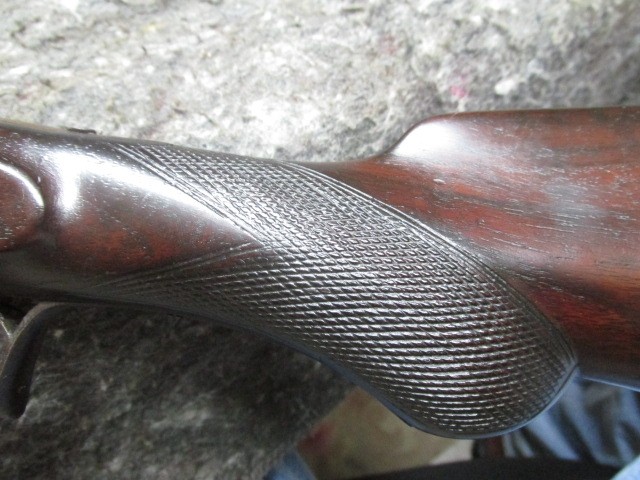


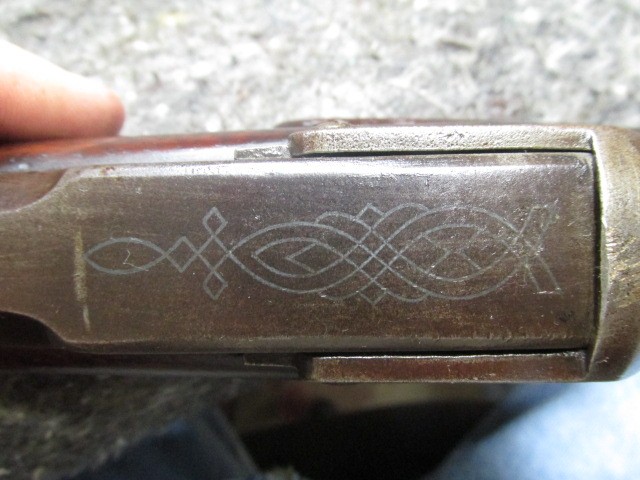
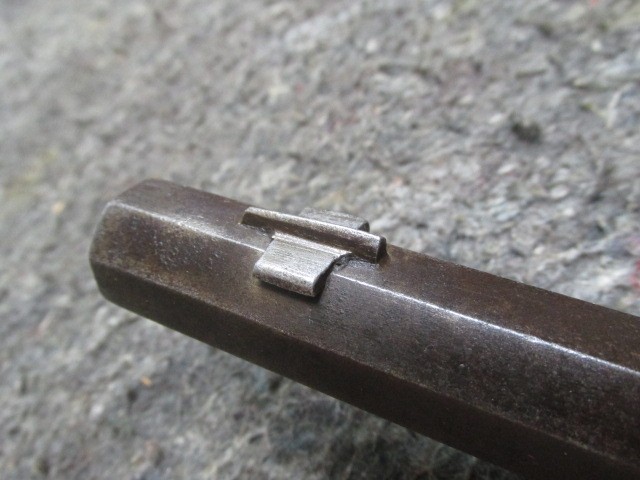
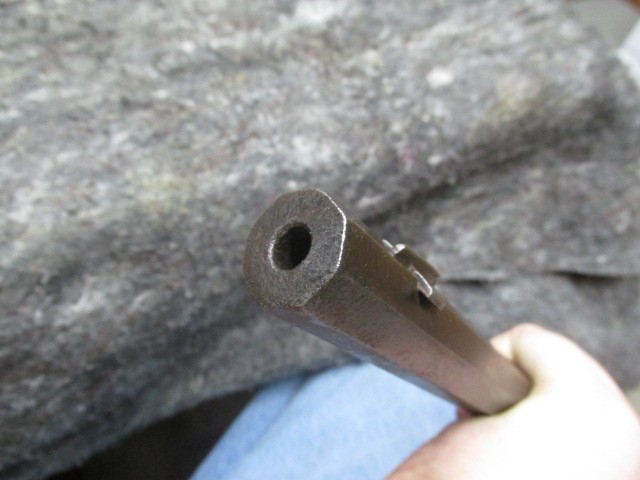
Bischop Pierre
This is a huge revolver that while chambered for only
five shots still almost dwarfs the big Smith & Wesson 1st Model DA Revolver in
.44 Russian. The barrel on this Bischop revolver measures 6 inches (152mm) and
the overall length is 10-3/4 inches (274mm). The revolver has the “one finger”
Pryse-type opening system that was first adapted by Francotte (instead of the
two-finger Counet-Pryse pattern), but that is the only similarity to the opening
system that Counet first patented. For securing the top-break opening system
this revolver uses a long and heavy spring attached to the top strap of the gun
as well as a vertical post on the left of the frame. We have only seen this
system on a few rare Belgian revolvers.
The gun is stamped on all parts with the number 16; this
is almost certainly a shop mark for assembly purposes and not a serial number,
but it does give the idea that not many of these Bischop revolvers were turned
out. The 1877 inspector’s mark of a star over T is found on the left side of the
barrel assembly as well as on the front of the cylinder. Also on the front of
the cylinder is the pre-1894 Liege proof. On the frame under the left grip is
stamped the mark of Pierre Bischop; a half-stamped string of letters; P BISCHOP.
There are a few other half-stamped letters following this, but we cannot
decipher them.
On this page there is shown a photo of another Bischop
revolver that we found in 2006 in South America. It has the same outline as this
larger revolver, and it uses the same odd top-break opening system, but it was
chambered for the smaller .455 cartridge.
Richard Young


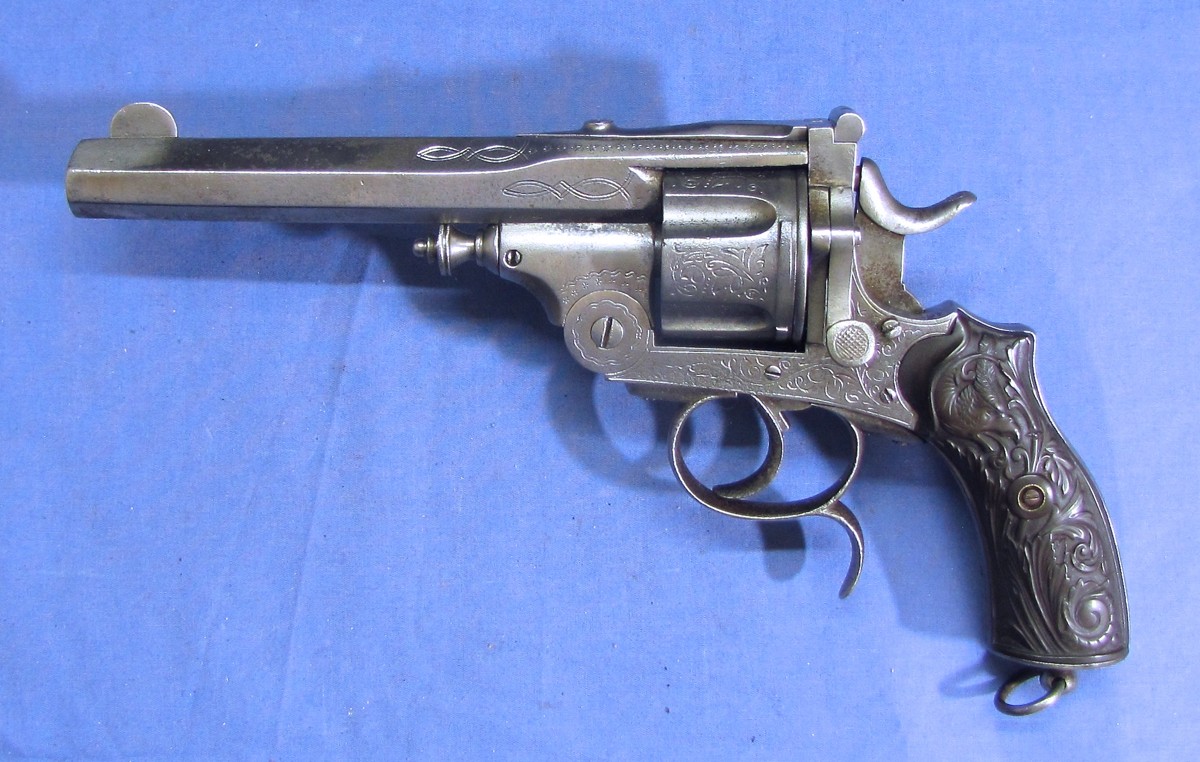
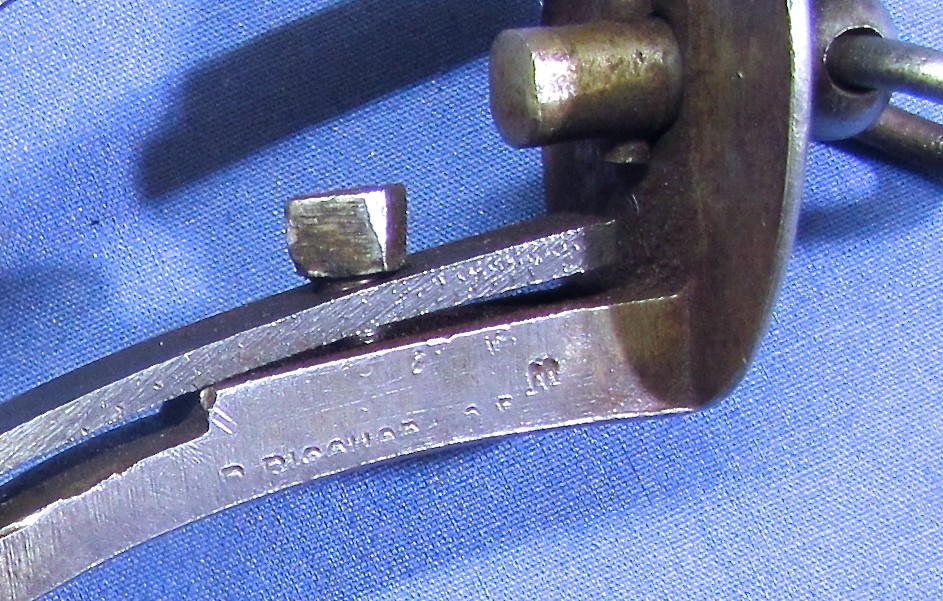
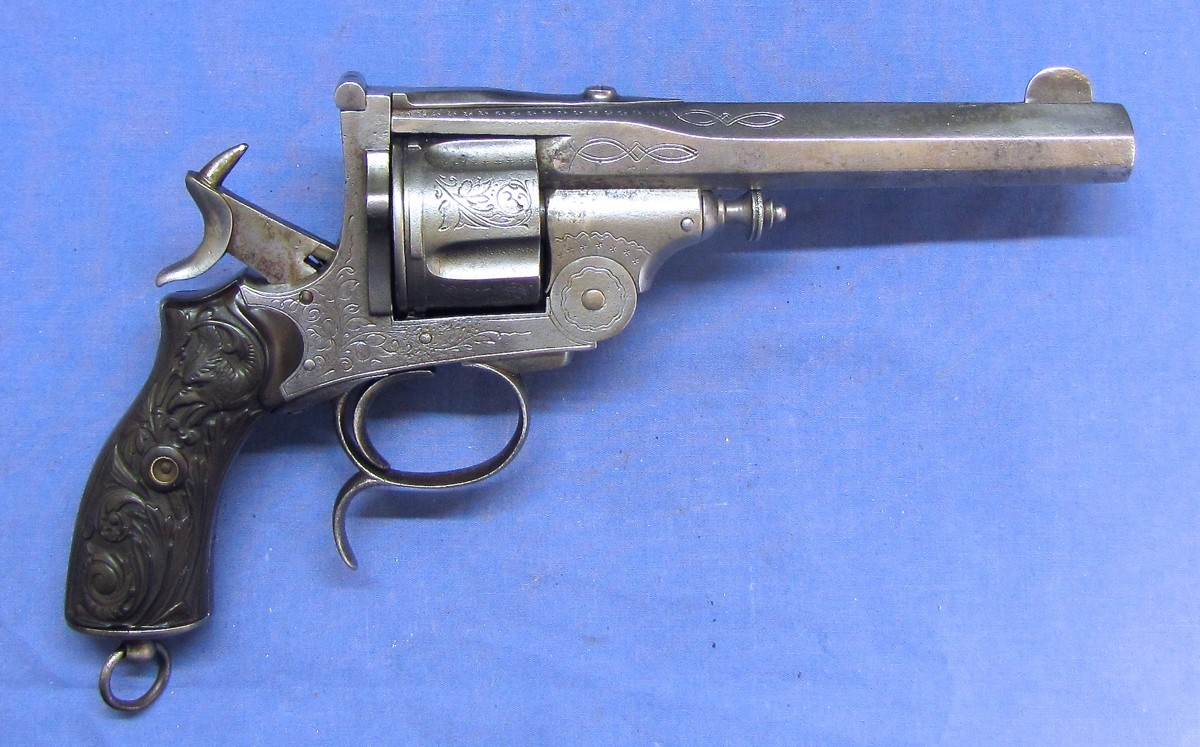
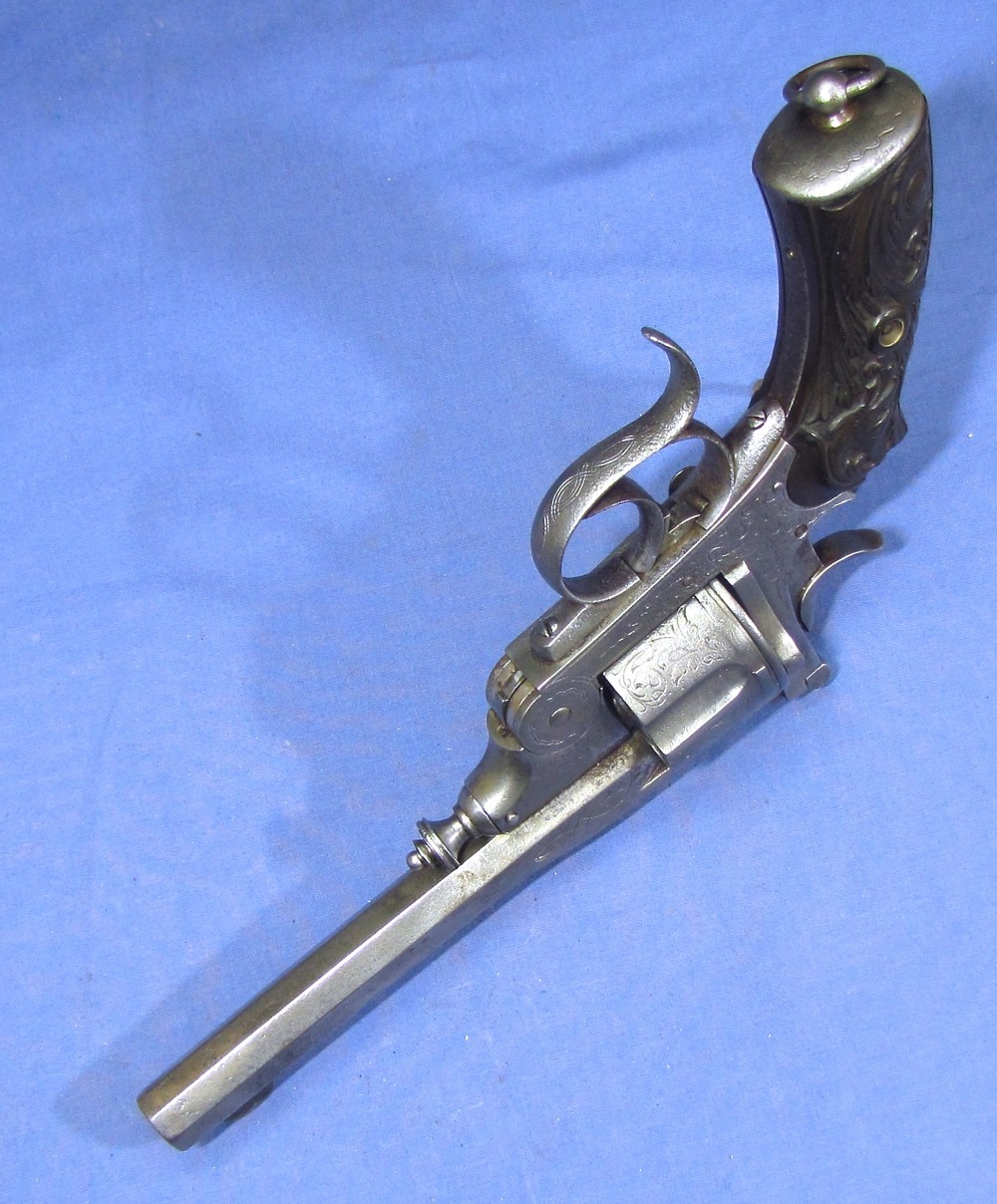
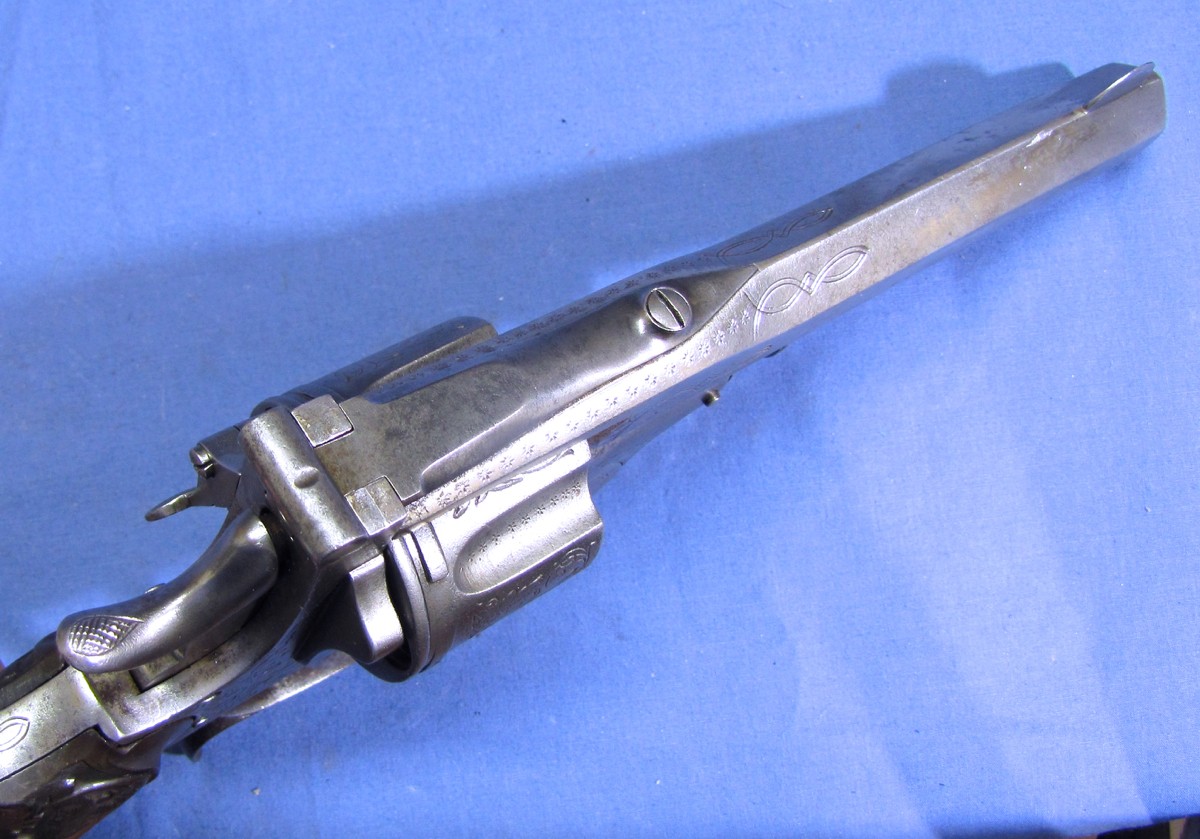
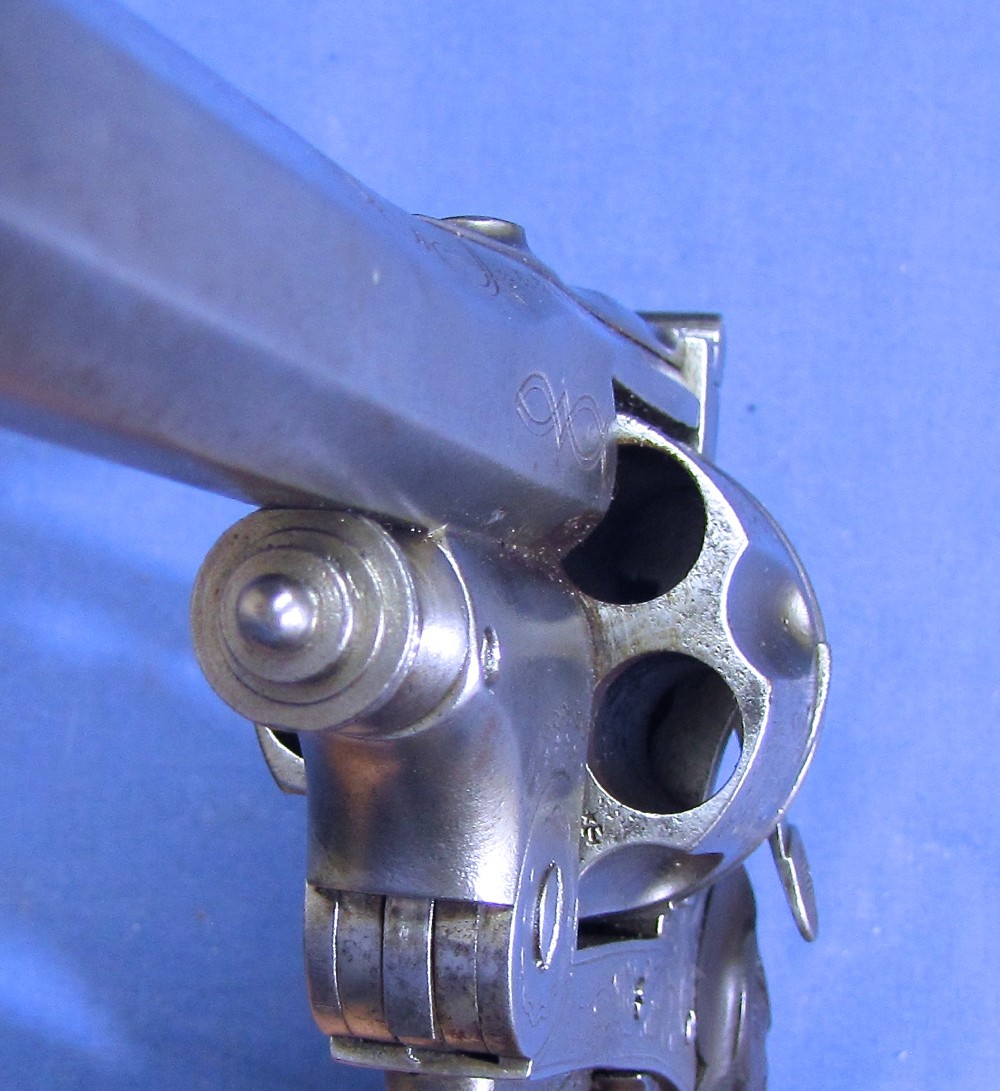

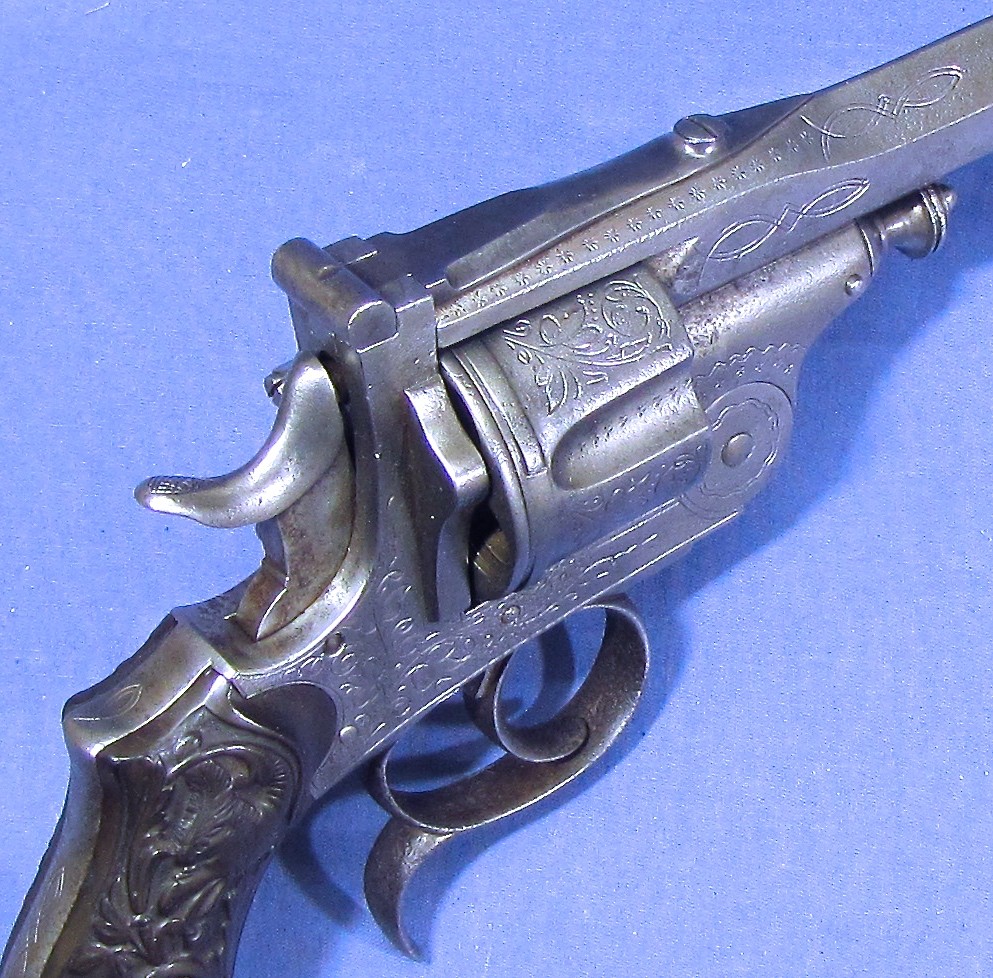
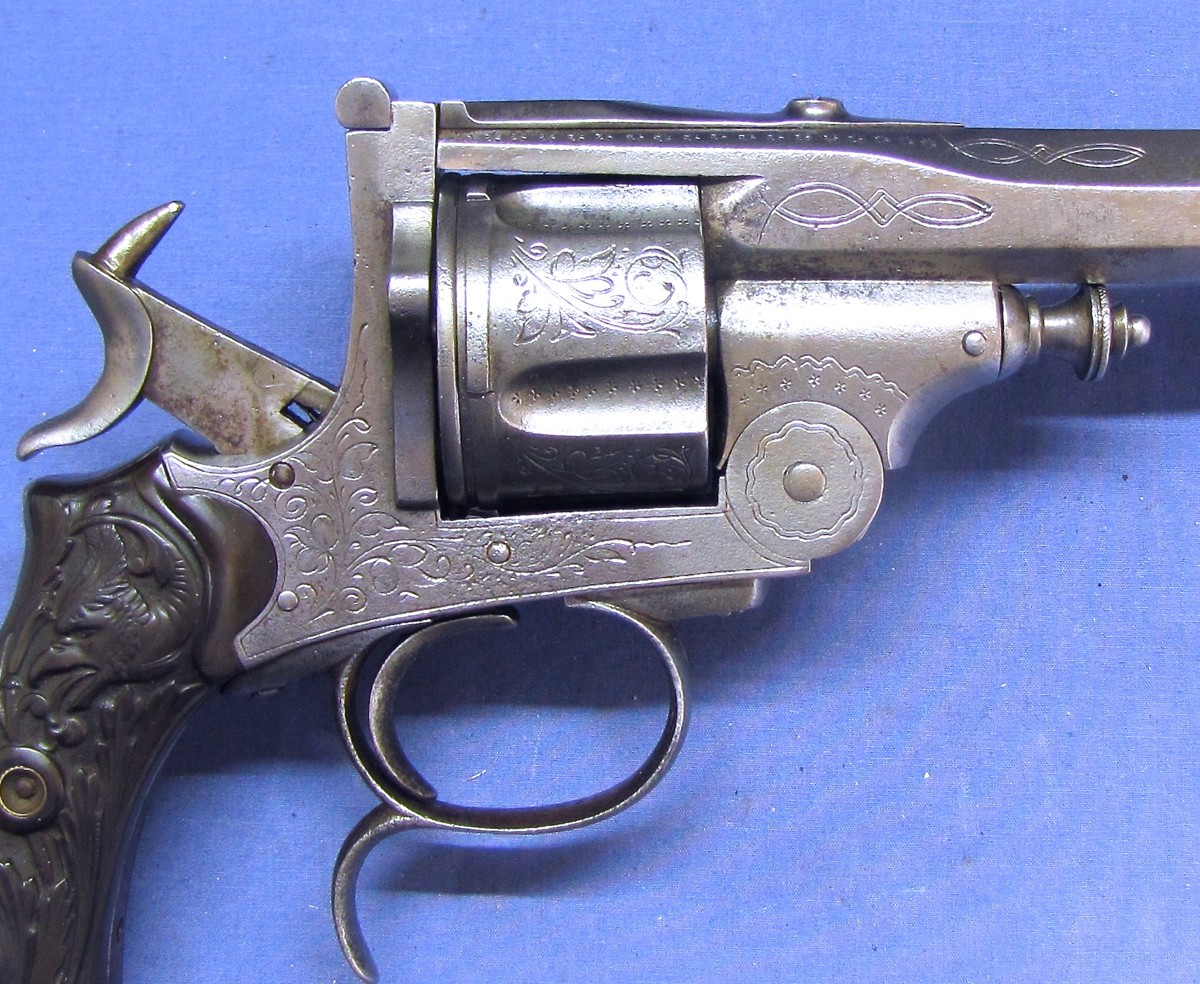
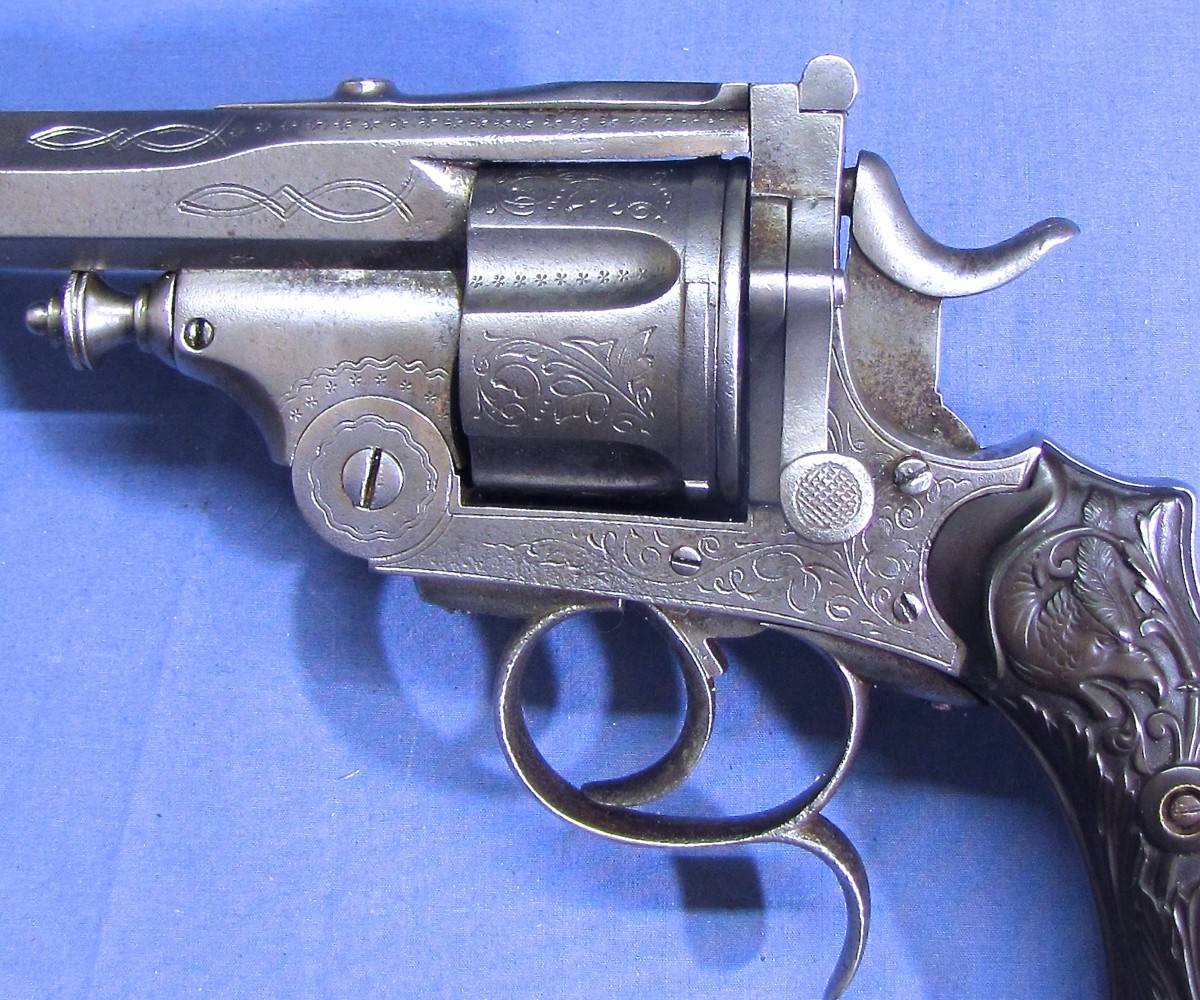
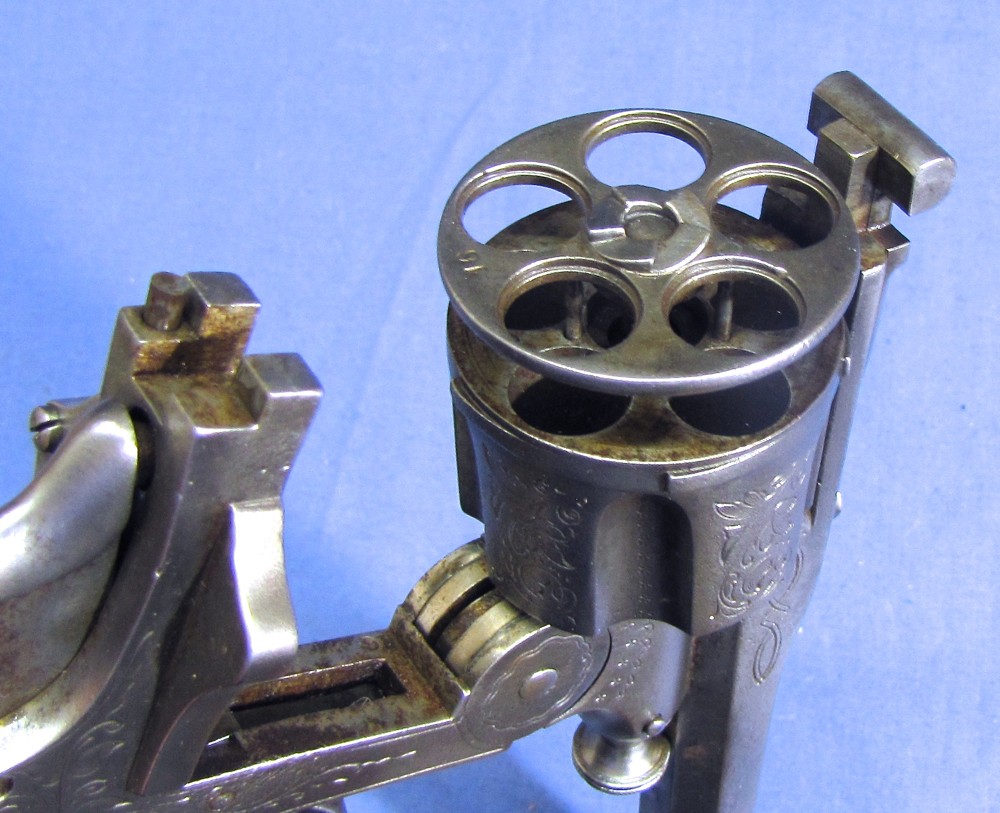
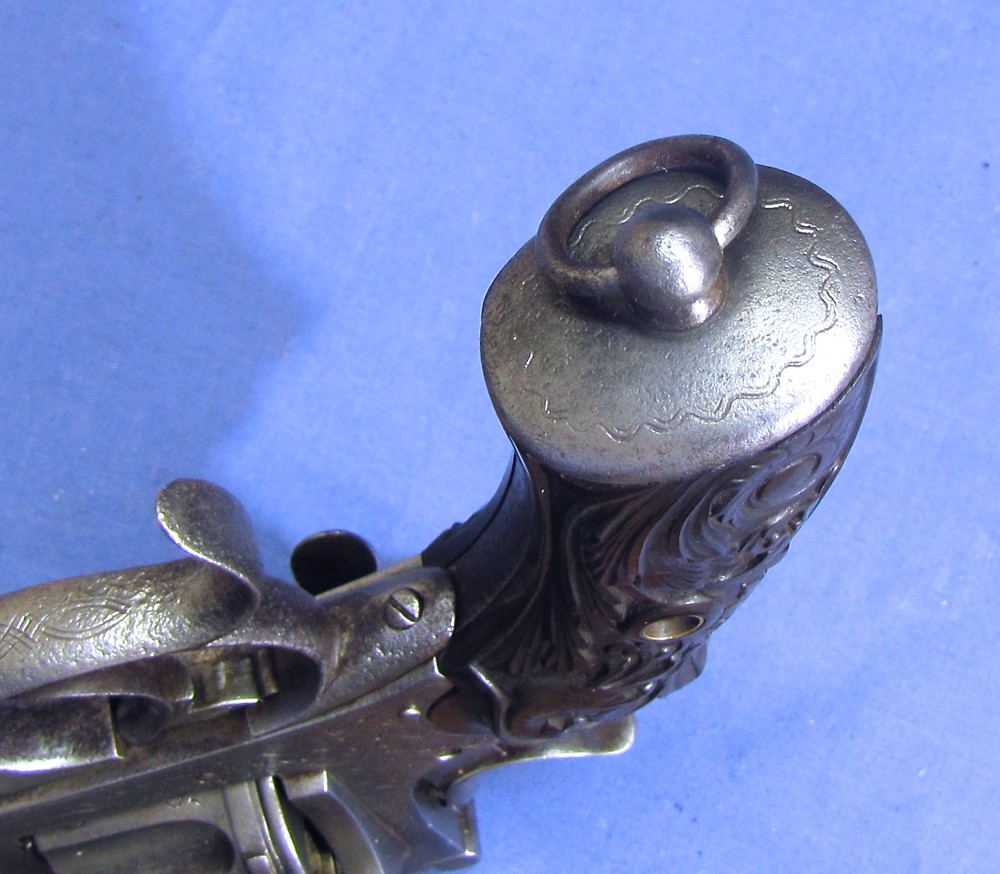
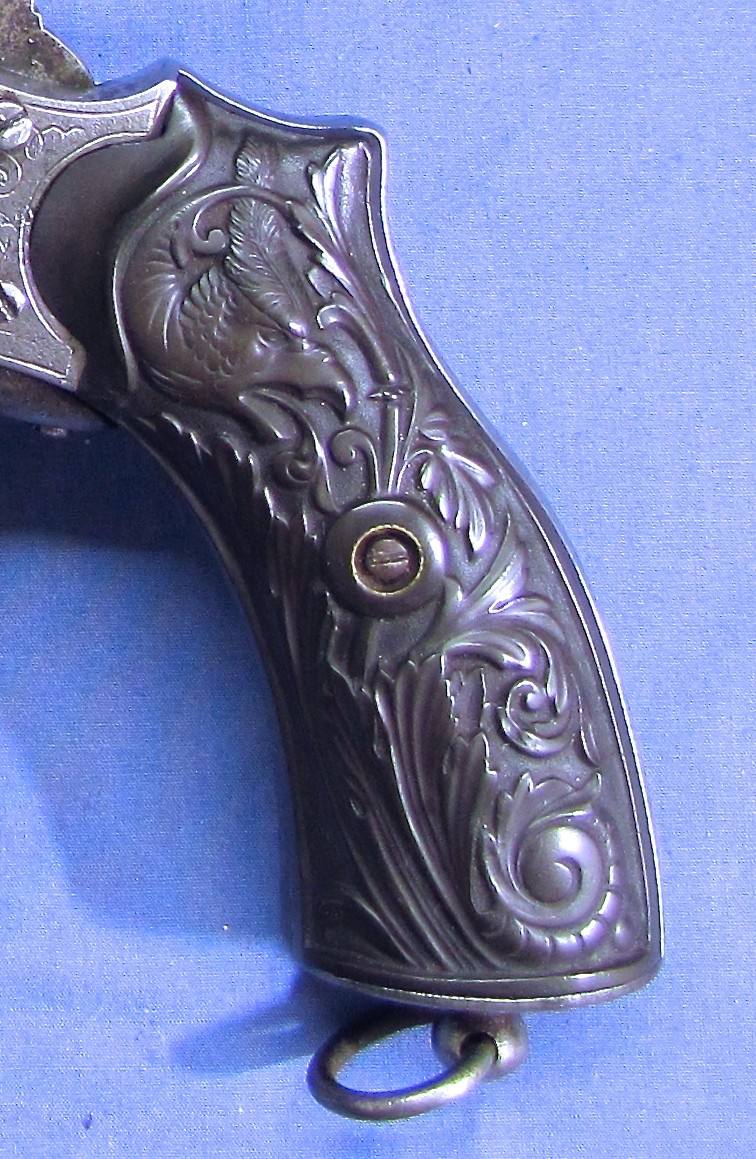
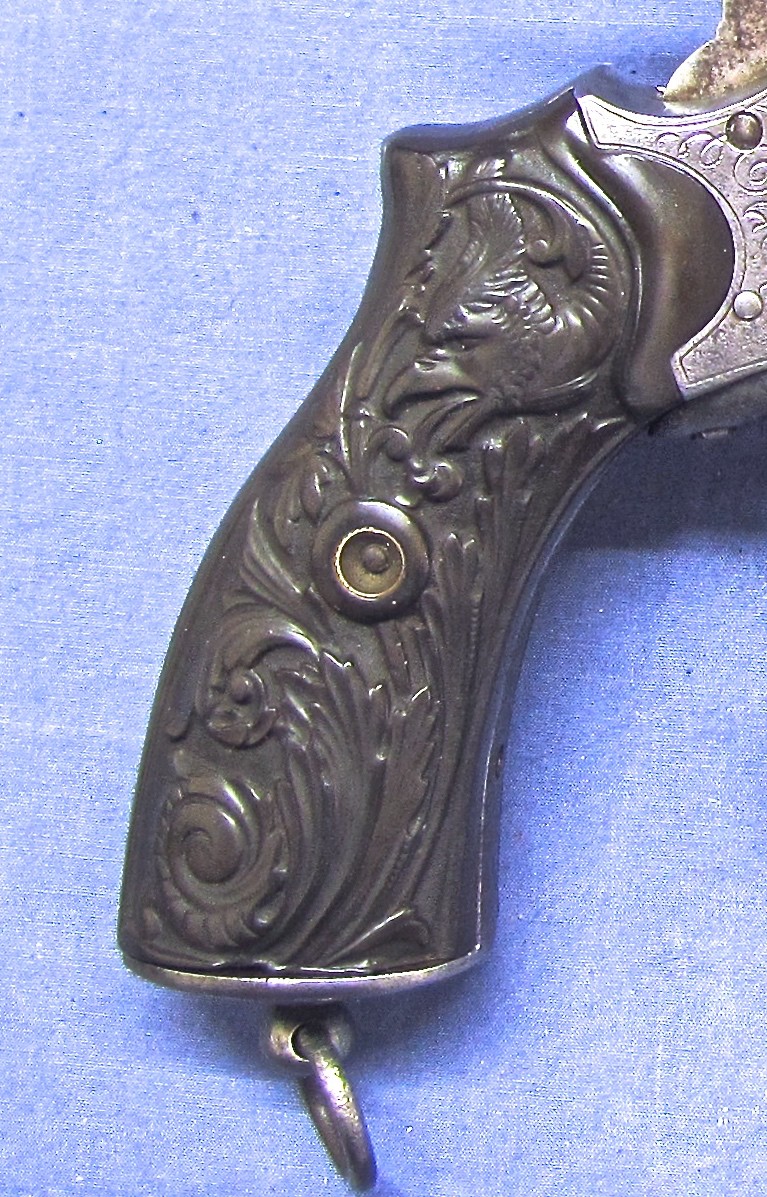
Bischop Pierre
It is
about a rifle of living room "with the Liègeoise" signed P. Bischop. The rifled
bore is with 8 sides and carries a bead and V and a front sight fixed in
tenon-mortise. The percussion system seems to be of the "Warnant" type but
perhaps Bischop has added an invention of his own. Without patents it is not
easy to make the difference. The weapon is equipped with a trigger guard with
volutes. The stick of type "pistol" is in drowning and ends in a plate of layer
decorated with a pretty decoration representing a pigeon it seems to me?
The
weapon carries struck on the barrel the name of the manufacturer is "P. Bischop
& C".
It is more than probably about Bischop Pierre, manufacturer of weapons in Liege street Behind the Hall (1890) then street Large Way, 553 in Herstal. From 1890 to 1895, it deposits 7 Belgian patents relating in particular to a system of rifle of living room. Unfortunately, I do not have this patent.
I did
not notice any punch of tests of Liège or others on this weapon??
GG


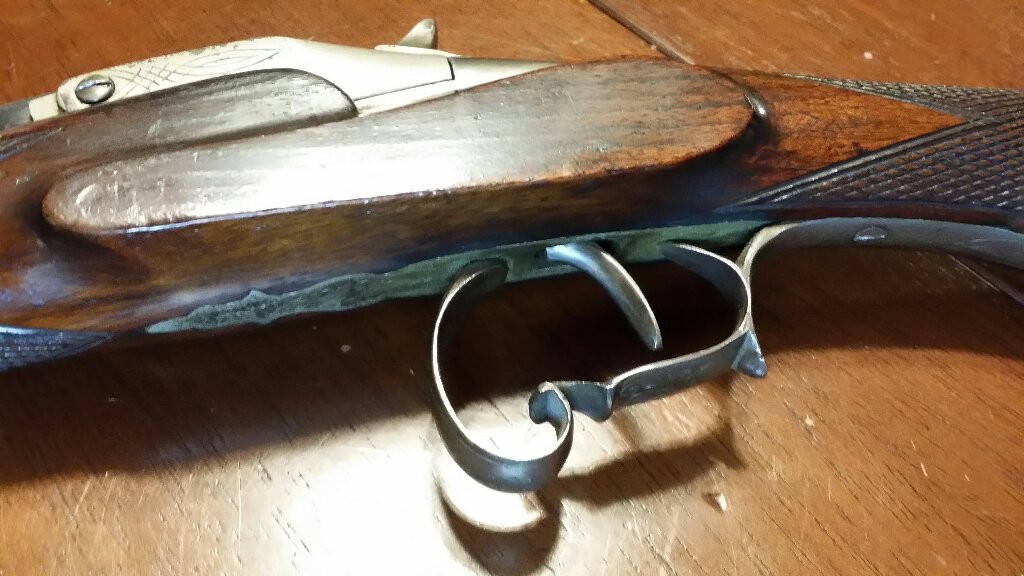
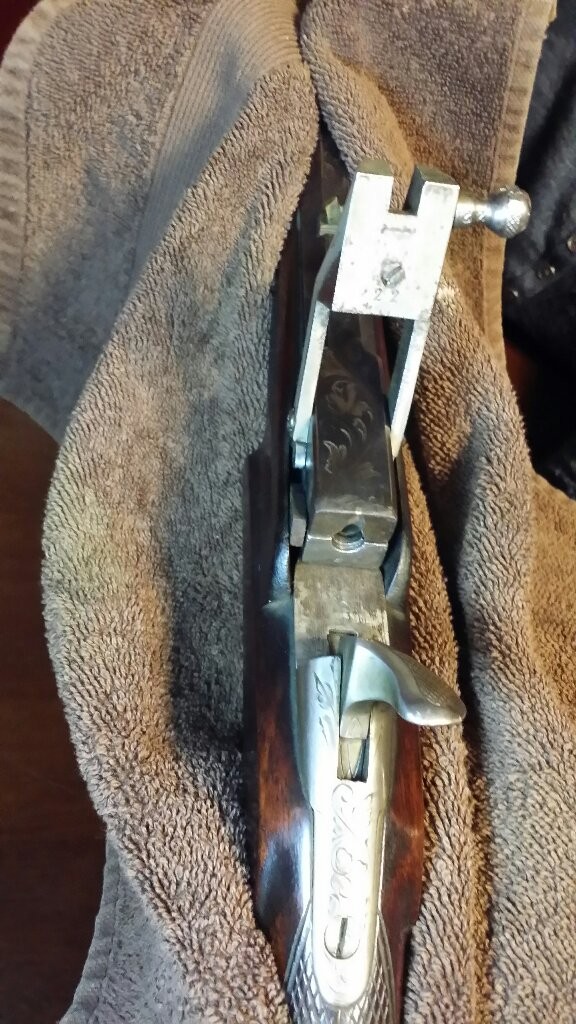
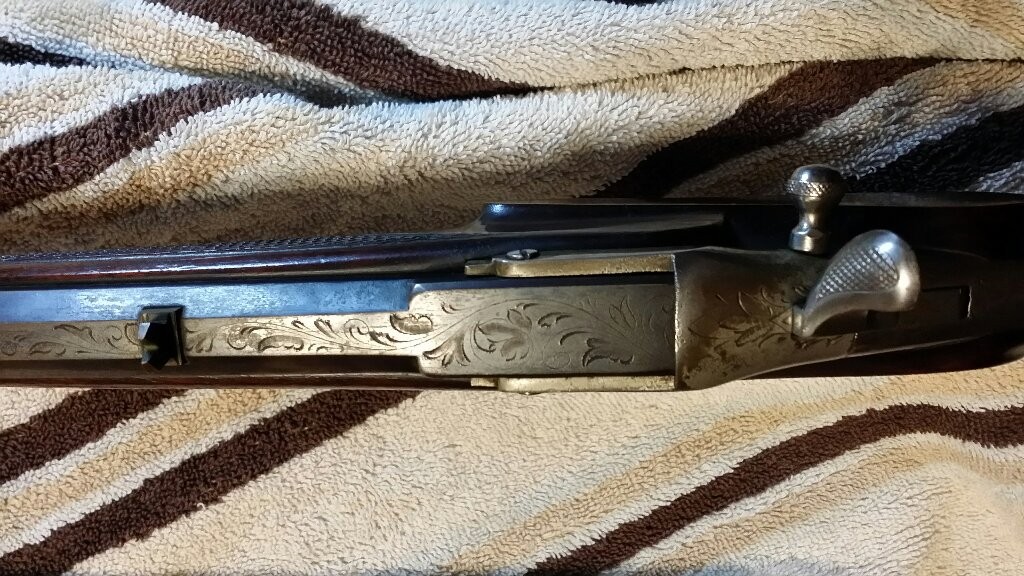

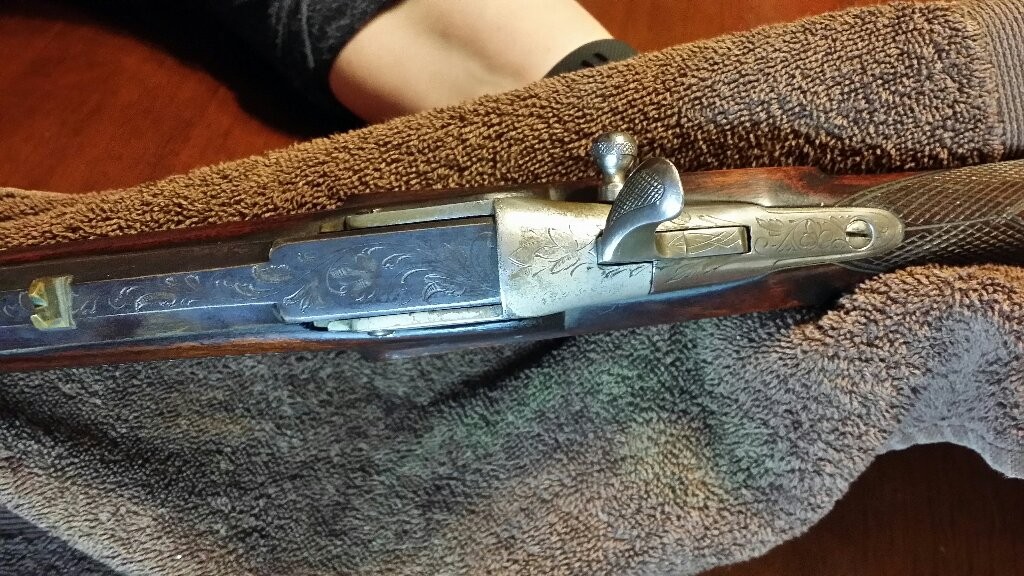
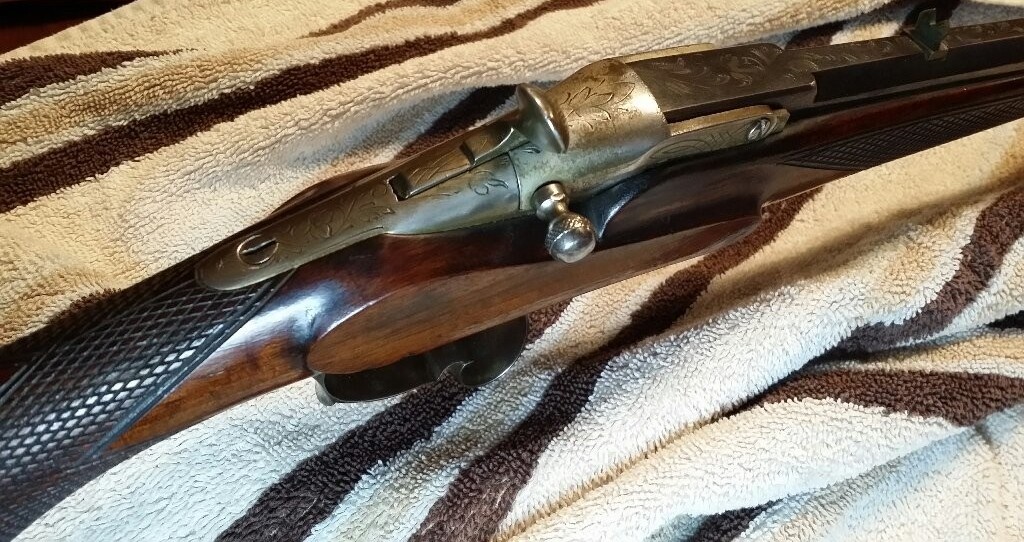
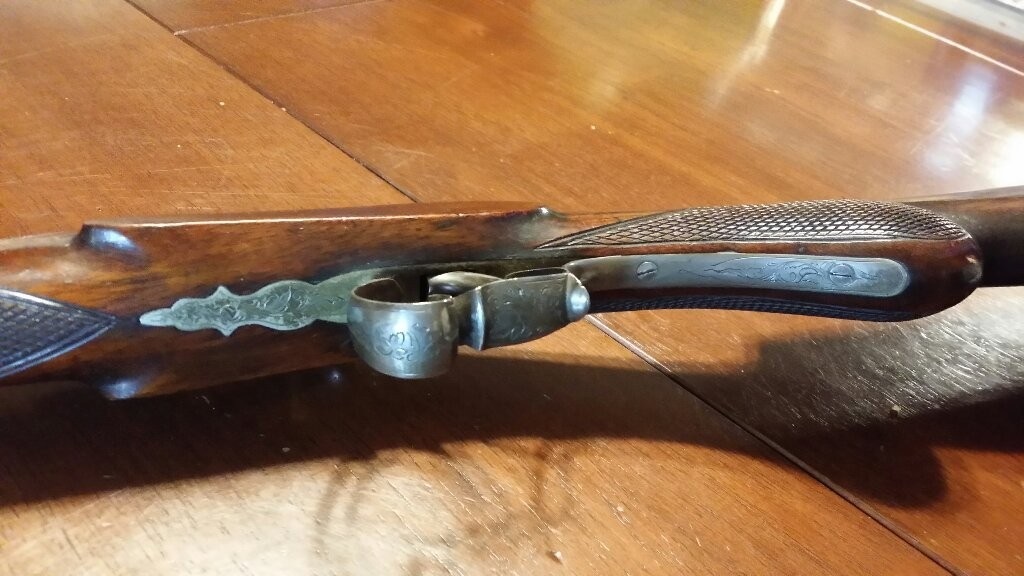
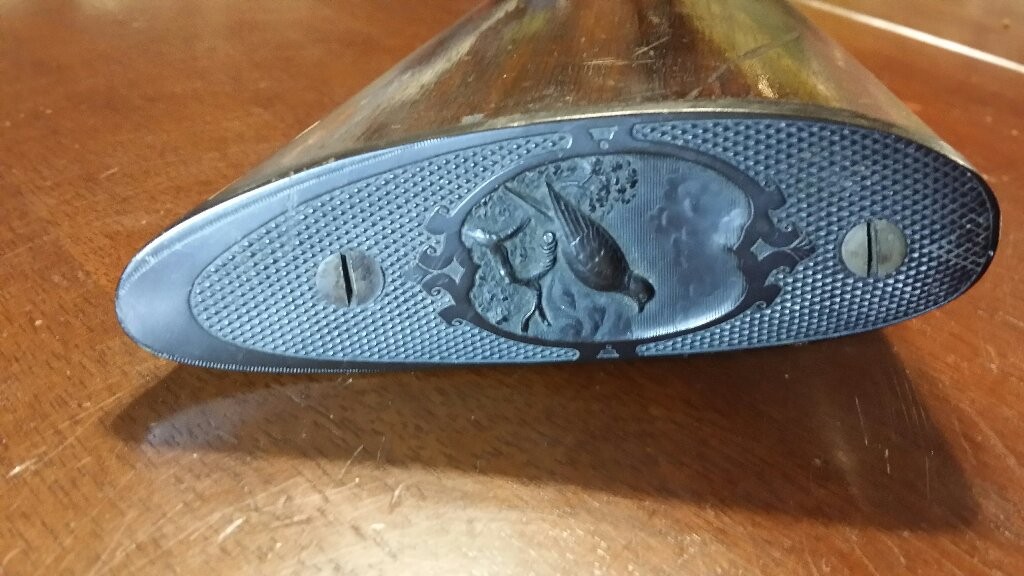
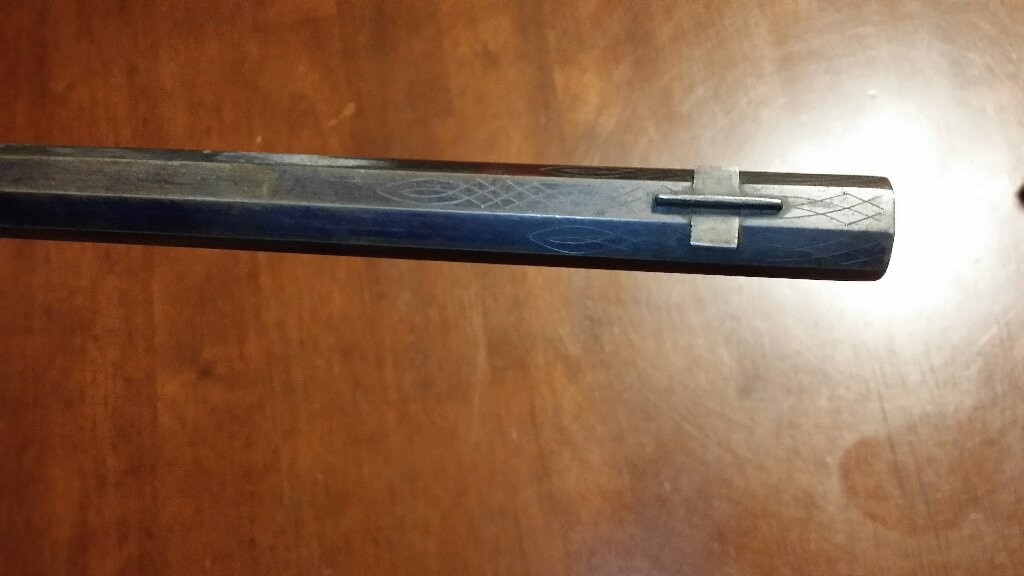
Bischop Pierre
Standard rifle Martini-Henry (gauge?).
Model with lever of trigger guard. This weapon seem to have in more one bolt with the lever!?
Punches
R (large) crowned: rifled bore, of use from the 30/01/1894 to 1968.
PV under drawn up lion: test with the powder lives without smoke since 1898 (1903 following of other sources).
Spangled BB: countermark of the controller post 27/01/1877.
Peron: inspection post 16/06/1853.
ELG on star in a crowned oval: final acceptance post 11/07/1893.
Markings (under reserves)
PB in an oval: Bischop Pierre, manufacturer of weapons initially in Liege, street Behind the Market, then with Herstal, Broad street Sees, 553 and then 43, could be the manufacturer.
“LG Bté” under crown: Gilliquet Lambert, arms manufacturer with Cheratte, holder of 3 patents*, deposited between 1894 and 1913, relating to improvements with Martini rifles, could be the inventor of an improvement to the Martini system which the photographs don’t make it possible to see. (Maybe the bolt of the lever!?)
(*) - A Martini rifle with visible hammer and automatic carry-cartridge.
- Rifle or carbine Martini, with visible or invisible hammer, opening and ejecting the cartridge automatically.
- Rifle or carbine Martini with visible or invisible hammer.
HPH
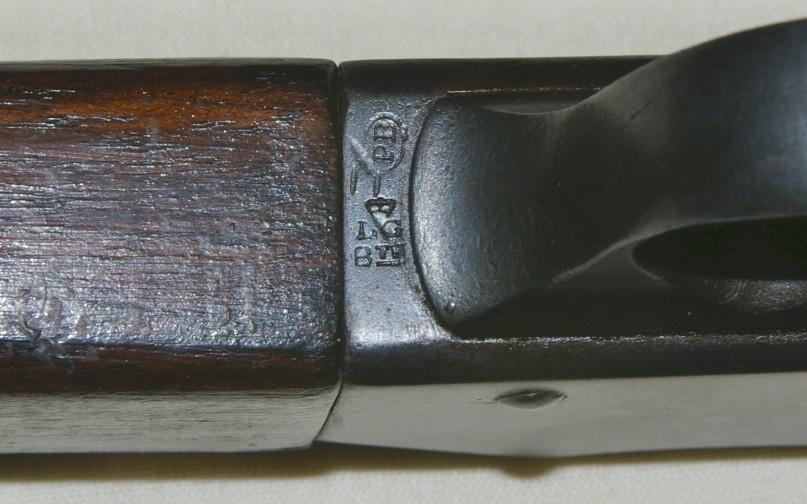
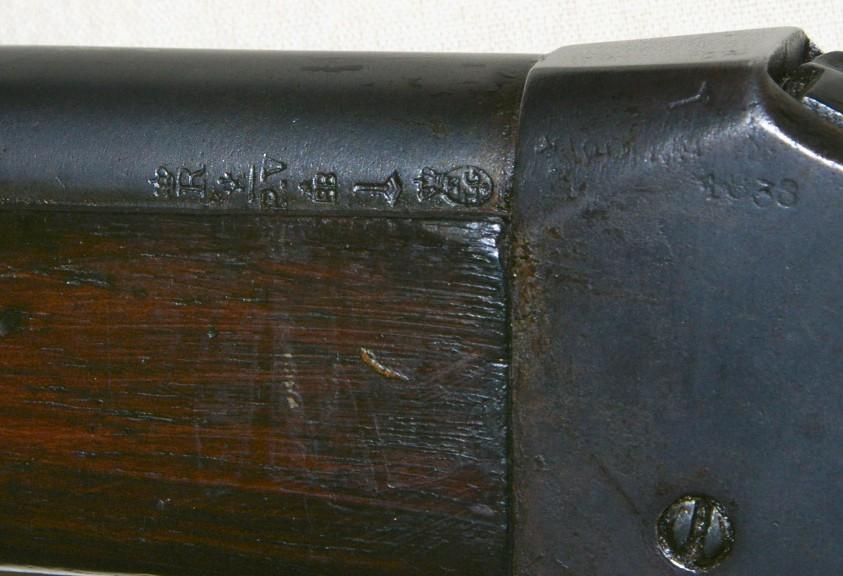
Pierre Bischop
This is a gallery/parlor rifle of the WARNANT system, with a short tilting breech.
The gun is probably of 22 Rimfire caliber .
The barrel is octagonal.
Pistol-grip stock.
Fancy scroll trigger guard .
Stamps of the Liege Proof House, namely:
Star/ELG in an oval: final acceptance, used from 1846 to 1893.
Star/R : counter mark of the controller, post 1877.
Period of manufacture: between 1877 and 1893.
Other marks
N in a circle: could be the mark of the barrel manufacturer.
In any event, it could be a product of:
NOIRFALISE or of Nicolas NICOLET-DUPONT both from Fraipont.
P. BISCHOP BREVETE: is the mark of the inventor: Pierre Bischop, Arms manufacturer
rue Derrière la Halle, in Liege (1890) then in Herstal, 553 rue Large Voie.
Between 1890 and 1895, he registered seven patents including one for a parlor a rifle.
Unfortunately without this patent, it is impossible to say what differentiates the WARNANT rifle from the BISCHOP rifle which is very similar.
GG
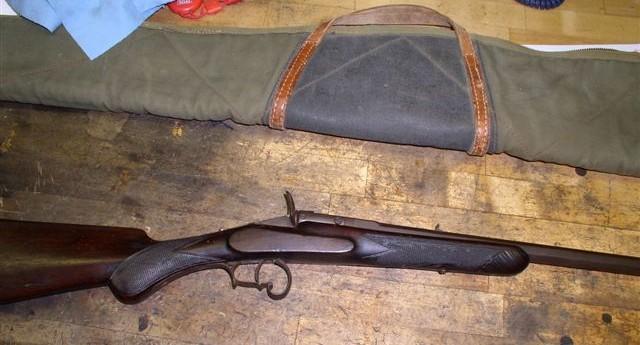

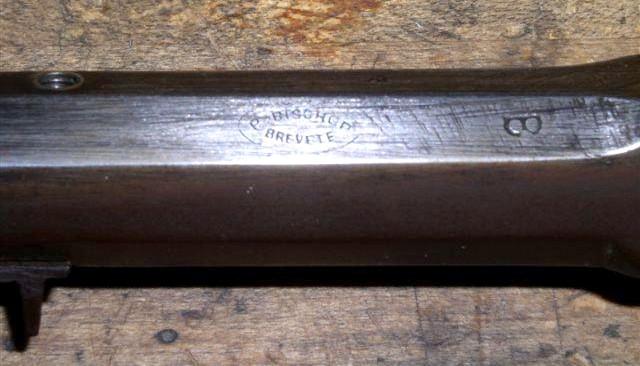
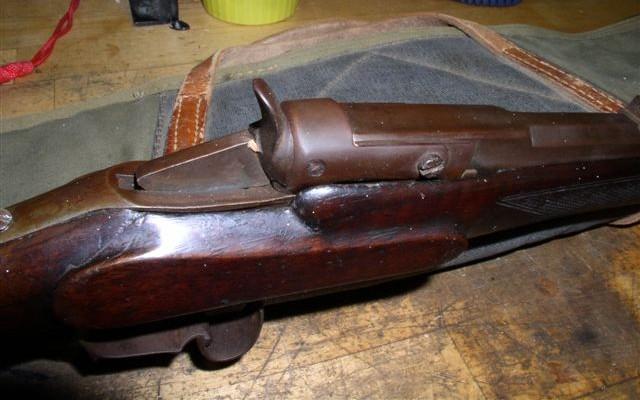
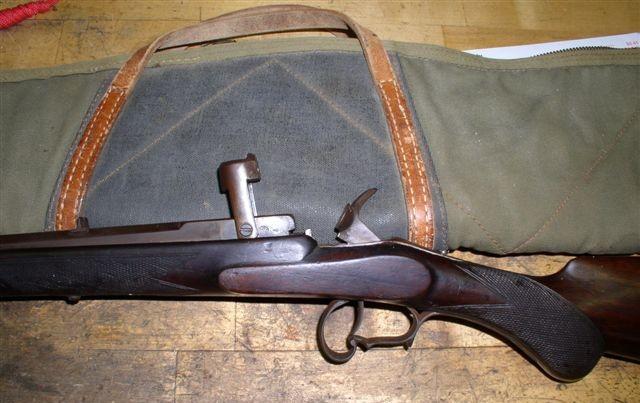
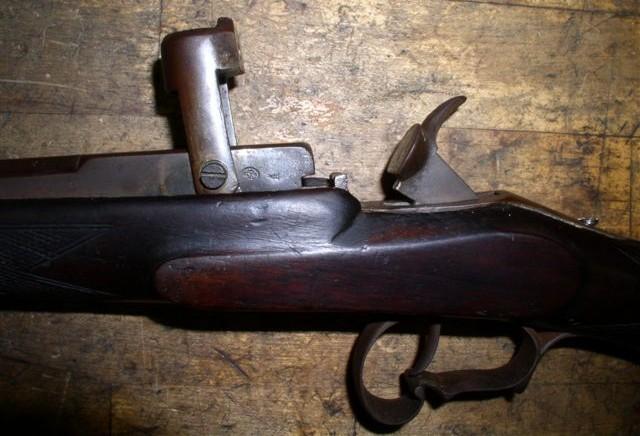

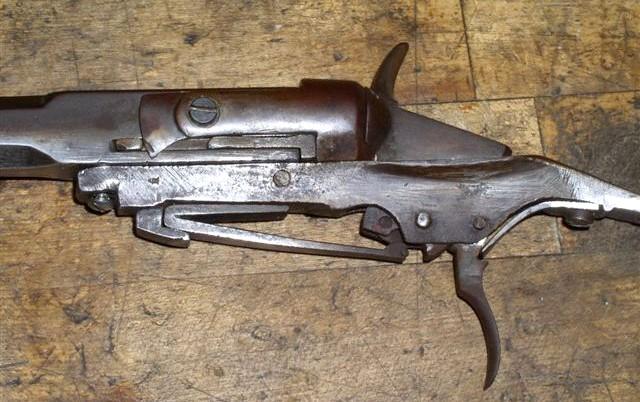
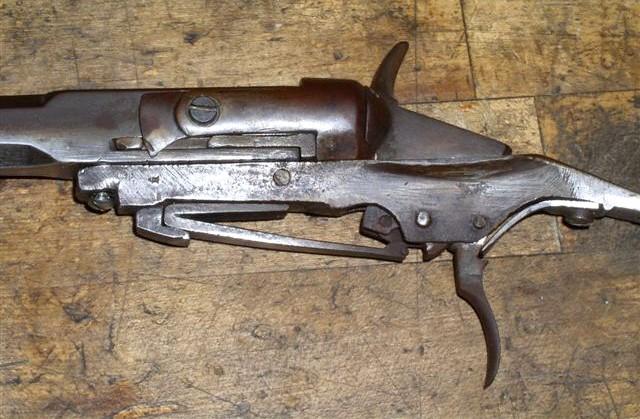
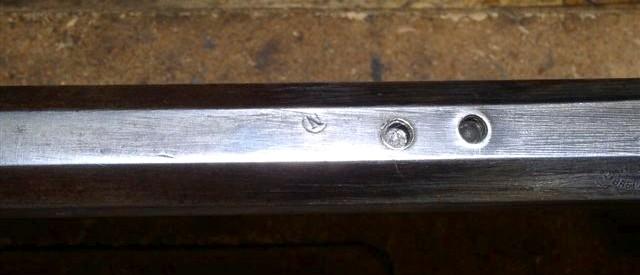


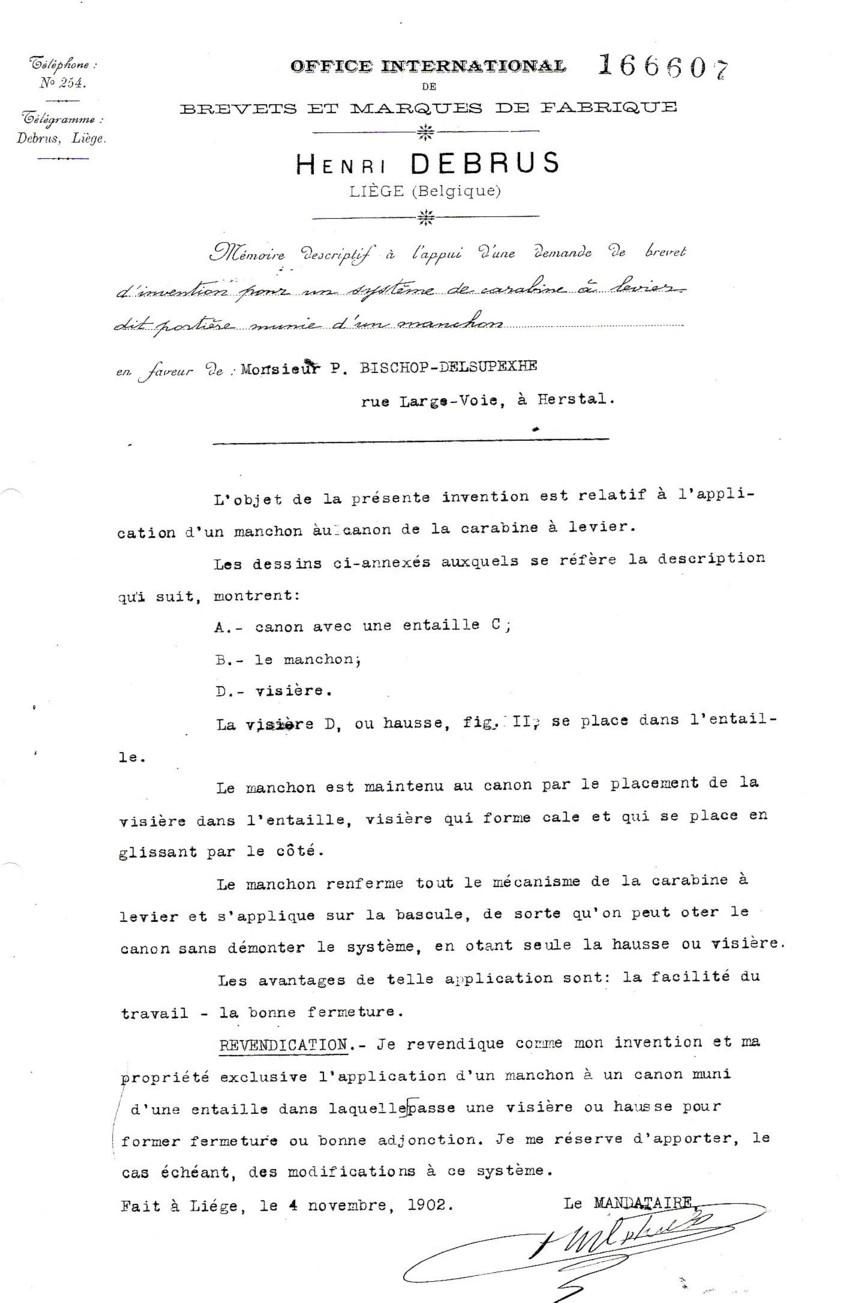
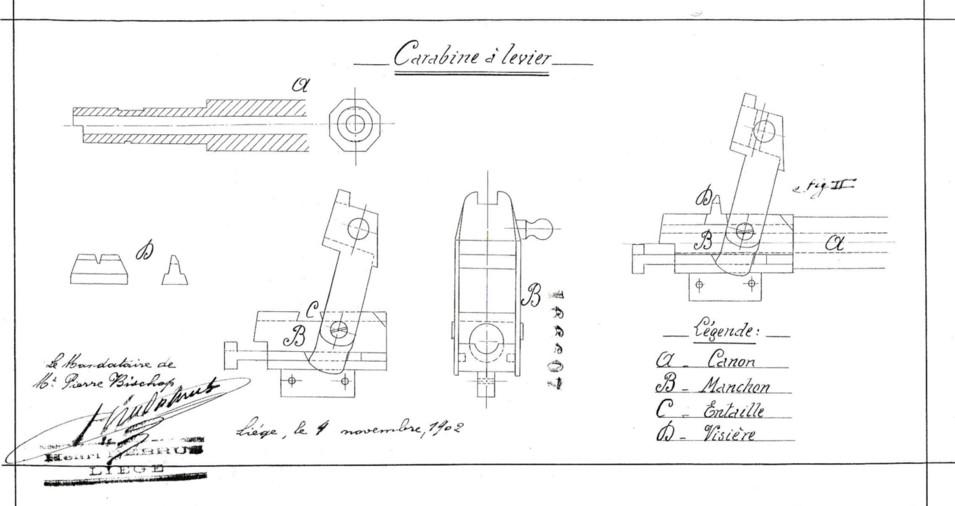
Pierre Bischop
This break-open revolver is very similar, by its lateral lever opening system, to the WARNANT and COUNET systems.
However bears an extremely worn out mark which could perhaps be identified as being BISCHOP Brevetes??
BISCHOP Pierre was a gun manufacturer rue Derrière la Halle in Liege then 553 rue Large voie in HERSTAL; From 1890 to 1895, he registered seven patents in particular for a parlor rifle, a scaled down system of the Remington rifle and a system of mechanism applicable to the l Peabody lock.
Since I don't have all the patents of this inventor, it is impossible to assert that it is indeed the real manufacturer.
The stamps of the Liege Proof House found on this weapon :STAR/ ELG in an oval (1846/1893) and STAR/D counter marks of the controller post 1877, indicate that the weapon was manufactured between 1877 and 1893, which corresponds to the working life of this manufacturer.
GG
